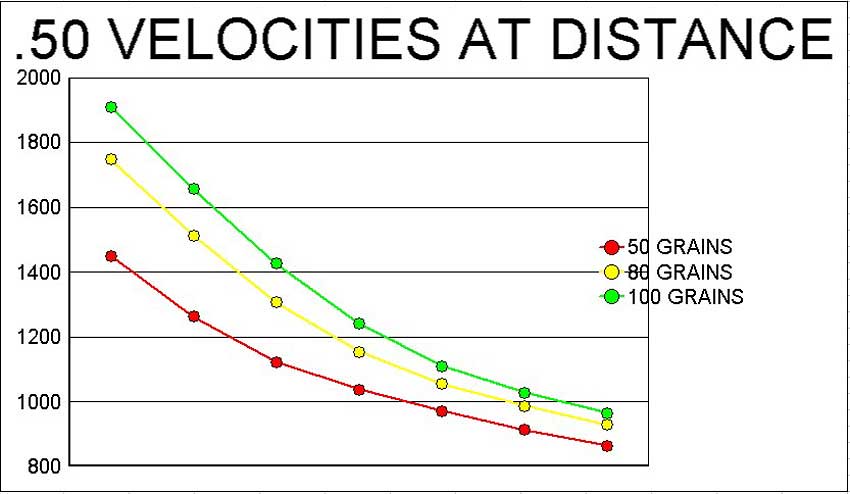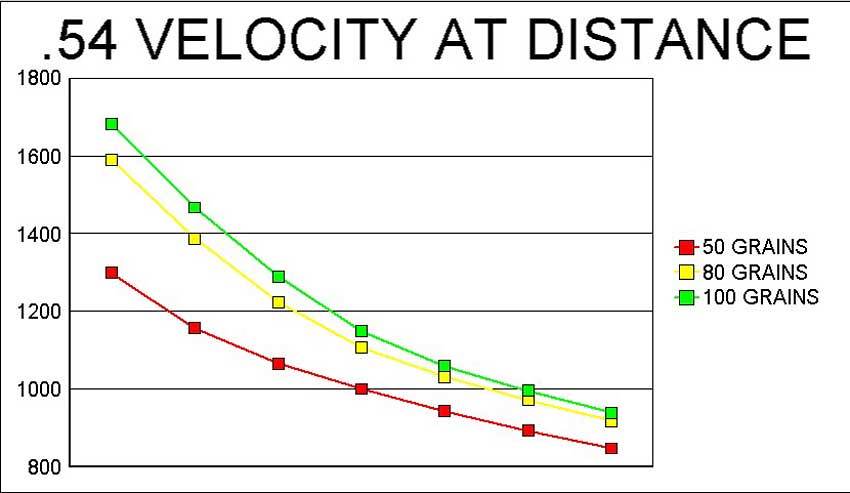I see a lot of people on the forum that really like large powder charges in their rifles.
Most of them are wanting very high velocities at longer distances when they are hunting.
Unfortunately, although the velocities at long ranges with large powder loads are a little faster than small powder loads give, they are not that much faster.
It has long been noted that the faster the ball is moving when it leaves the muzzle, the faster it slows down as it travels downrange.
To show this in graphic form, I created two graphs.
One is for a .50 caliber gun shooting a patched .490 diameter roundball over a 50, 80 and 100 grains of 3Fg powder load.
The other graph is for a .54 caliber gun shooting a patched .530 diameter roundball loaded over the same 50, 80 and 100 grains of 3Fg powder load.
Each dot on the graphs show the balls velocity at intervals of: Muzzle velocity, 20 yards, 40 yards, 60 yards, 80 yards, 100 yards and 120 yards starting on the left hand side.


Notice that the velocity difference between the three powder loads are quite large on the left side, they become more and more alike as the ball reaches 100 yards (2nd set of dots from the right). At 120 yards (dots on the right end) there is even less difference.
Looking at the charts also shows that although the .54 caliber ball is starting out slower than the .50 caliber ball using the same powder charge, at 100 yards, the difference in velocity is very small.
With a 100 grain 3Fg powder charge, the .50 was traveling 190 fps faster than the .54 at the muzzle.
By the time they reached the 100 yard distance the .50 was only going 33 fps faster.
This is because of the greater sectional density of the larger ball.
Is it possible that the old timers back in the day understood that using very large powder loads did not make much difference out at longer ranges?
I for one, think they did.









